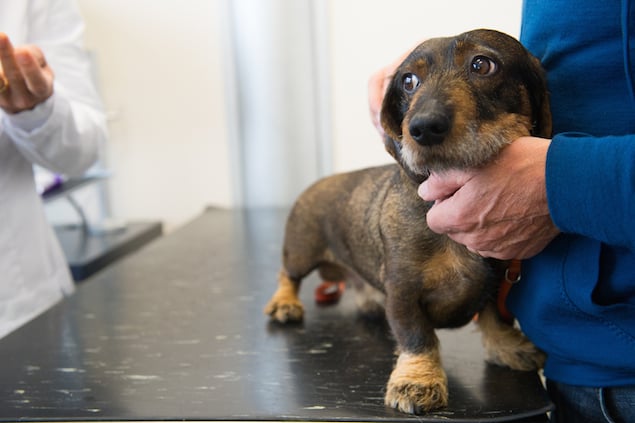Have a question you’d like to ask a vet? Send your query to pets@washingtonian.com with the subject line “Vet Q.”
Q: We’re debating having our new dog microchipped, but we’ve read some stuff online about negative side effects of microchipping. What do you tell your patients?

Dr. Chris Miller, AtlasVet DC: Oh, the internet. It’s such a wonderful source of information. Most veterinarians and doctors will tell you that they can’t stand it when their clients begin doing research on their own, and I used to be one of them. The trick is knowing where to look and how to differentiate legitimate sources from unreliable ones. When it comes to medicine, there is a website for everything covering every topic imaginable. This is certainly the case with microchips.
I tell clients the truth is that microchips are incredibly helpful and have revolutionized pet safety. They are small, inexpensive, and simple to administer, and more than double the chance of you getting your pet back if it gets lost. When an unknown pet arrives at a hospital or shelter, scanning for a microchip is one of the first things done to help identify the animal and locate its owners.
But what about all those negative side effects listed on the internet? Maybe you’ve heard the biggest rumor, which is that microchips cause tumors. It is probably best to stick with the American Veterinarian Medical Association’s website on this one. While it is actually true that there have been cases of tumors affiliated with microchip implantation, the numbers should clear things up. Of the 3.7 million pets that were microchipped in a British study, two tumors were reported. Two! I don’t have enough room for the zeroes required to show you how tiny of a percentage that is. Out of the hundreds and hundreds of microchips I’ve placed, I’ve never seen a tumor form at the site. Neither has any doctor I’ve ever spoken to about the topic.
Other things you might have read on the internet about microchips include that they migrate from the area at the shoulder blades where they are implanted to other parts of the body, or that they don’t work. While migration can happen, it is extremely infrequent, and the newer microchips are less likely to move. Microchips are manmade objects and occasionally can fail to read, but this, too, is extremely rare. This is why it is a good idea to get your vet to check the microchip at the annual visit. The most common cause of a microchip failing to reunite pets with their loved ones is that it wasn’t registered or the owner’s information is inaccurate. There are several types and brands of microchips, and each one has a database that syncs the microchip number with the owner’s information.
If you are still skeptical of the safety of microchips, ask your veterinarian if he or she has ever seen a significant complication with them. I’m confident they most likely will not have anything negative to say. The biggest issues with microchips are usually due to human error, such as improper implantation, inaccurate reading techniques, and inaccurate or absent registration information. The good news: As microchips become more and more commonplace, these issues are becoming less and less frequent. The benefit-to-risk ratio of microchipping your pet is a no-brainer—get it done.

















